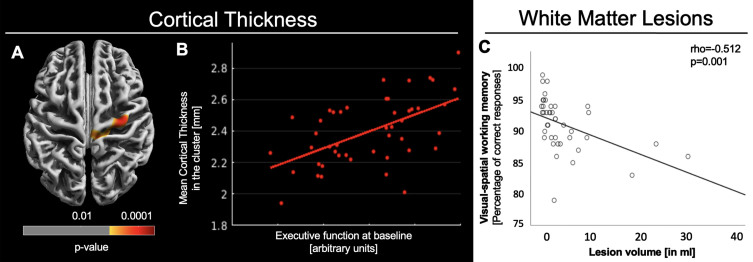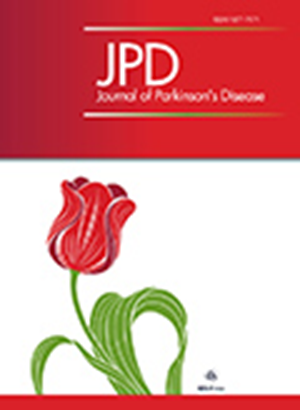帕金森病患者的工作记忆训练反应能力并非由皮质厚度或白质病变决定。
IF 5
3区 医学
Q2 NEUROSCIENCES
引用次数: 0
摘要
帕金森病患者极易出现认知功能衰退。因此,通过工作记忆训练(WMT)进行早期干预可能会有效保护患者的认知能力。然而,大脑结构特性(即皮质厚度和白质病变体积)对训练反应性的影响尚未得到研究。本文分析了 46 名帕金森病患者的行为和神经影像学数据,其中 21 人参加了基于家庭的计算机自适应 WMT。虽然皮质厚度和白质病变体积与基线时的认知表现有关,但这些大脑结构特性似乎并不决定WMT的反应能力。本文章由计算机程序翻译,如有差异,请以英文原文为准。

Working Memory Training Responsiveness in Parkinson's Disease Is Not Determined by Cortical Thickness or White Matter Lesions.
Patients with Parkinson's disease are highly vulnerable for cognitive decline. Thus, early intervention by means of working memory training (WMT) may be effective for the preservation of cognition. However, the influence of structural brain properties, i.e., cortical thickness and volume of white matter lesions on training responsiveness have not been studied. Here, behavioral and neuroimaging data of 46 patients with Parkinson's disease, 21 of whom engaged in home-based, computerized adaptive WMT, was analyzed. While cortical thickness and white matter lesions volume were associated with cognitive performance at baseline, these structural brain properties do not seem to determine WMT responsiveness.
求助全文
通过发布文献求助,成功后即可免费获取论文全文。
去求助
来源期刊

Journal of Parkinson's disease
NEUROSCIENCES-
CiteScore
8.40
自引率
5.80%
发文量
338
审稿时长
>12 weeks
期刊介绍:
The Journal of Parkinson''s Disease (JPD) publishes original research in basic science, translational research and clinical medicine in Parkinson’s disease in cooperation with the Journal of Alzheimer''s Disease. It features a first class Editorial Board and provides rigorous peer review and rapid online publication.
 求助内容:
求助内容: 应助结果提醒方式:
应助结果提醒方式:


